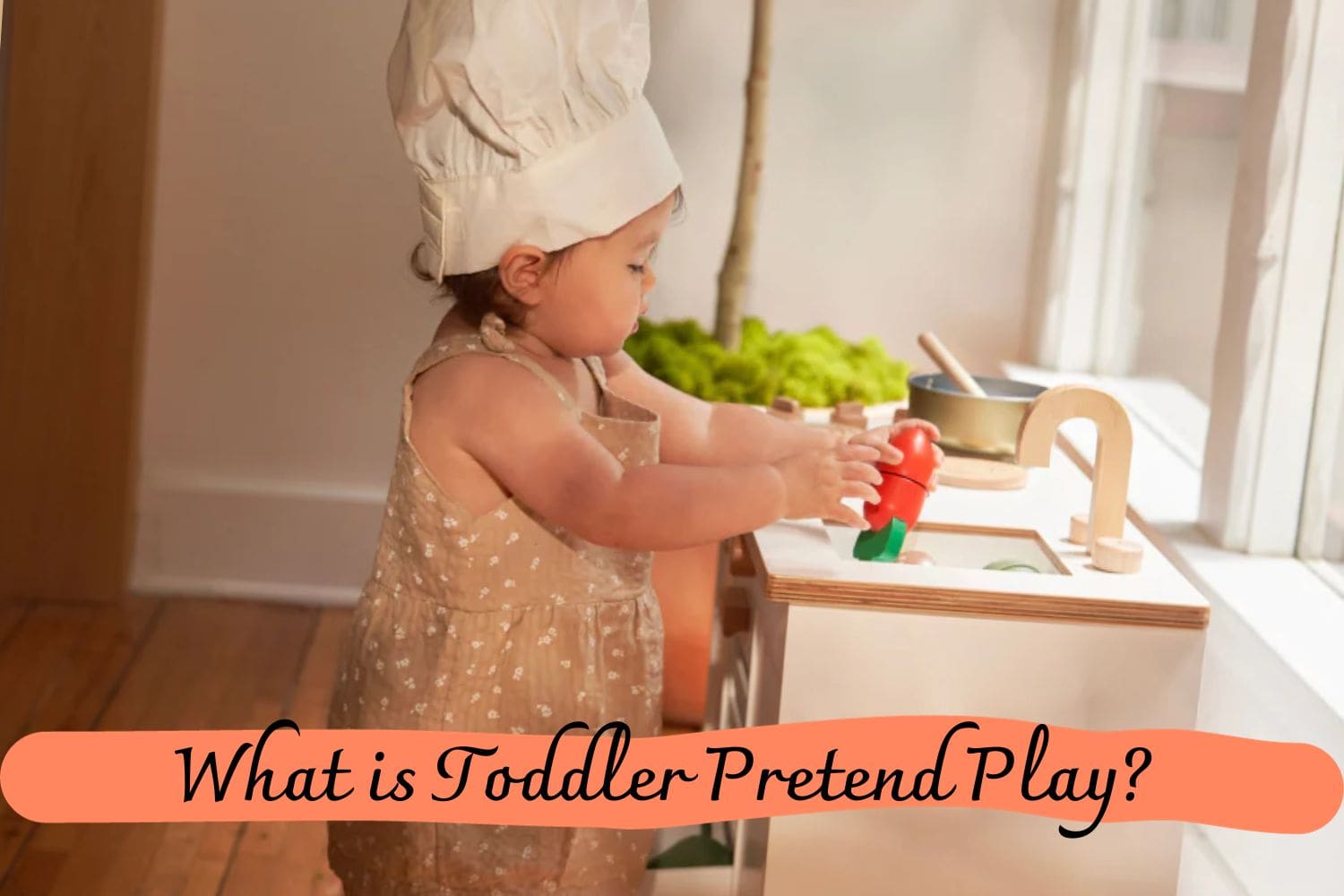Discover – What is toddler pretend play? And the benefits it has for your child’s development. Learn how to make use of creative play with activities that will help engage your little one’s imagination!
What is Toddler Pretend Play?
Are you looking to help your toddler explore their creativity and expand their imagination?
Pretend play is an essential part of every child’s development, and can start as early as 18 months. While it may seem like nothing more than dress up or make-believe, pretend play offers young children a world of opportunities for learning about themselves and the world around them in a fun way.
From developing problem-solving skills to gaining confidence in expressing themselves; this interactive playing encourages kids to explore social roles that they may not be familiar with – such as being a teacher, doctor, fireman, or chef.
Come with us while we discover: What is toddler pretend play. And how does it benefit your growing little one’s development?
What is Pretend Play?

Pretend play, also known as imaginative play, allows children to explore new roles and express their creativity. Whether it’s playing make-believe games or dressing up, the possibilities are endless. Imagine sailing on a cardboard ship, cooking up an imaginary feast, or even pretending to be a grown-up going to work.
While toys like play food and dress-up clothes can enhance the experience, they are not necessary. Using simple objects without defined purposes sparks even more creativity. A bucket of leaves becomes a cauldron of soup, a laundry basket transforms into an airplane, and a pile of pillows becomes a mountain.
Furthermore, the exploration of these social scenarios can begin even at a young age. Simply engaging in back-and-forth conversations with your baby allows them to try out different social roles.
What is Toddler Pretend Play?
12 Months Old: Autosymbolic Schemes
From as early as 12 months old, children begin to embark on a journey of imagination and make-believe. This stage, known as “autosymbolic schemes,” is where they first start showing signs of pretending.
Imagine a child lying down and pretending to sleep, or taking a playful sip from their cup while making delightful noises to indicate they are “drinking.” At this stage, the child’s intentions are crystal clear through their actions and expressions – a smile, a meaningful gaze, or a playful look in your direction.
To young toddlers, playing with toy replicas of everyday objects is an absolute joy. By using these items for their intended purpose, they demonstrate their blossoming cognitive skills.
But it doesn’t stop there. Eventually, these young adventurers will take their pretend play to the next level. Enter the world of symbolic play, where objects become the characters of their imagination.
Instead of reaching for a real phone, a child may grab a block and pretend to talk on it. Why? Because in their brilliant minds, the block shares certain characteristics with a phone – size and shape, perhaps. It’s a perfectly acceptable substitute.
This kind of symbolic pretend play reveals the remarkable depth of a child’s thinking and imagination.
At its core, pretend play stems from a child’s social development. Their interactions with parents, family, peers, and caregivers lay the groundwork for play and serve as the foundation for their cognitive growth.
12 – 24 Months Old: Decentred Symbolic Schemes
Watch as your child’s imagination blossoms between the ages of 12 and 24 months. They’ll surprise you by passing you a cup to take a sip or attempting to feed you with an empty spoon. These playful gestures reveal a growing awareness of others as separate individuals.
Around the age of 2, toddlers take their pretend play to a whole new level with dolls. They give life to these dolls, endowing them with feelings and needs like hunger and tiredness. It’s a remarkable cognitive leap for your child.
What’s truly fascinating is that this advanced thinking appears specifically during pretend play. These skills aren’t yet seen in other areas of your child’s life at this young age. During pretend play, children understand that they are pretending, and they also recognize that their playmates are pretending too. They can embrace different perspectives, stepping into someone else’s shoes.
In symbolic play, children demonstrate their ability to assign separate identities to objects. They understand that a block is a block, but they can also imagine it as a phone. This kind of cognitive flexibility is rare for young children, who typically perceive things from an egocentric perspective.
Pretend play plays a vital role in developing a child’s thinking skills. It opens their minds to new possibilities and fosters imaginative exploration. As they grow older, children rely less on realistic toys, relying solely on their imagination to bring their play to life.
2-3 Years Old: a World of Imagination
Discover the magic of pretend play during the crucial age of 2-3 years. While toddlers begin to explore their capacity for pretending, they still benefit from adult guidance.
Introduce the wonders of dress-up into your child’s playtime routine to foster the development of fantasy play. Want to ease their anxiety before an upcoming event? Engage in role-play to familiarize them with new experiences.
Transform your living room into a tea party or dance party extravaganza with the help of your child’s stuffed animals. Encourage them to immerse themselves in imaginative scenarios and think outside the box, like using a remote as a microphone. By joining in on their social play, you’ll boost their confidence and comfort in pretend play.
Conclusion
The beauty of toddler pretend play is immense. Children have the amazing ability to use this type of play to express their imaginations and creativity in a safe, structured way.
By engaging in pretend play, toddlers also practice problem-solving, adaptability, communication, and empathy which will serve them throughout life.
The importance of this type of play should not be underestimated as it equips young minds with a variety of important skills; from communication and collaboration to creativity and flexibility.
Encouraging parents to prioritize free play time for their children can reap rewards in both the short-term and long-term development of a child’s cognitive abilities.
As parents strive to provide support and care for their children during these formative years, create rich learning opportunities centered on pretend play today ––your child will thank you later!
Thanks for reading our article What is Toddler Pretend Play? If you want to know more information, visit our website here.
Read more:
When Should a Child Stop Pretend Play?

